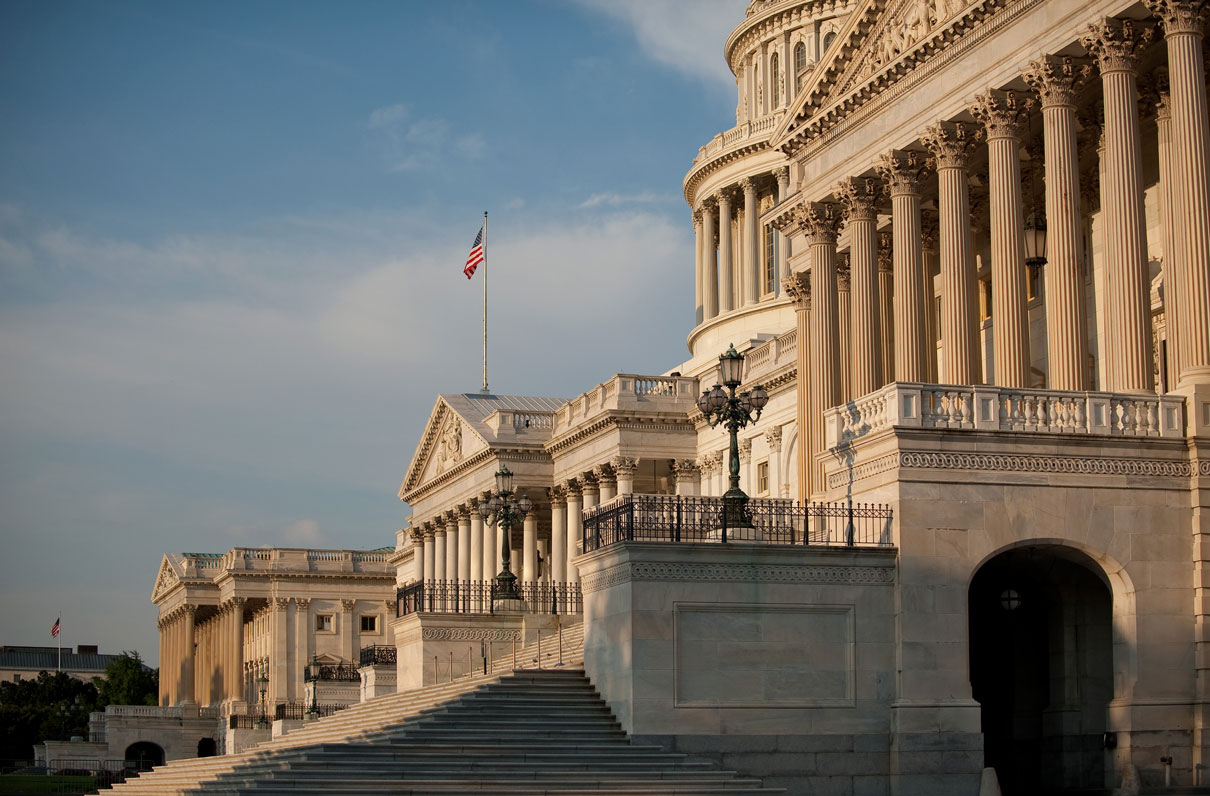With only weeks to go before a potential default on the nation’s financial obligations, senior congressional leaders and administration officials reached an agreement over the budget and the debt ceiling.
Negotiators agreed to raise federal spending levels for defense and nondefense programs by $320 billion. They also agreed to suspend the debt ceiling until July 31, 2021, setting the stage for a dramatic showdown in the first year of the next administration, regardless of which party sits in the White House. The two-year deal ends the threat of sequestration through fiscal year 2021.
The deal still needs to pass in Congress. House lawmakers planned to return to their home districts for the August recess beginning July 26. But in a July 12 letter to House and Senate leaders, Treasury Secretary Steve Mnuchin warned “there is a scenario in which we run out of cash in early September, before Congress reconvenes. As such, I request that Congress increase the debt ceiling before Congress leaves for summer recess."
For now, it appears the deal will pass.
The Debt Ceiling, Explained
The government hit the debt ceiling back on March 1. Since then, the Treasury department employed what’s known as “extraordinary measures” to keep the government running. Under extreme measures, the government can choose to delay fully funding things like Thrift Savings Plan accounts or pension funds for federal retirees. Once the debt ceiling gets raised or suspended, the government then puts in the missing money, plus any interest accrued.
But if the Treasury runs out of wiggle room to cover daily expenses in early September, the government would then begin delaying payments on things such as interest on the national debt, military personnel, and beneficiaries of government assistance programs like Medicare and Social Security. Defaulting on the government’s obligations would throw financial markets into turmoil.
It’s important to note that raising the debt limit does not authorize the government to spend more money: It merely allows the government to borrow more money to pay for the things it already agreed to authorize.
According to estimates at the Congressional Budget Office and Office of Management and Budget, suspending the debt limit until after the 2020 elections would allow the government to take on anywhere between $1.5 and $2 trillion in additional debt over the next ten years.
Budget Caps
The agreement sets defense spending at $738 billion in FY 2020 and $740 billion in FY 2021. The FY 2020 figure aligns more closely with what the House passed in its defense authorization bill earlier this month.
The House Armed Services Committee’s ranking member, Rep. Mac Thornberry (R-Texas), came out in support of the budget deal, saying, “While I believe that our military needs more funding than this agreement provides, it undoubtedly makes our military stronger and more agile. We cannot underestimate the incredible benefit of funding our troops on time for the second year in a row, something Congress hasn’t done in recent memory. By doing so, we will potentially save billions by avoiding wasteful stopgap measures.”
Thornberry went on to say, “This deal remains consistent with last year’s budget resolution, allows us to give our troops all of the pay and benefits they deserve and have earned, […] and continues to restore readiness.”
The End of Sequestration… For Now
The agreement continues to highlight the falied attept to rein in federal spending, the 2011 Budget Control Act. The Budget Control Act was designed to bring both parties together to come up with combinations of spending cuts and tax increases to reduce the debt and end trillion-dollar annual deficits. It contained a mechanism known as sequestration that would trigger automatic, across the board cuts to spending if Congress spent money above the law’s arbitrary budget caps.
To get around the caps, Congress passed a series of two-year budget deals, raising spending levels in the short-term by agreeing to extend sequestration out into the future. In the first two-year deal, the Bipartisan Budget Act of 2013, Congress tried to pay for the increased budget by cutting military retirement COLAs. The provision, known as COLA-1%, asked military retirees to be the only segment of the American population to shoulder the burden of the deal. After a groundswell of opposition from MOAA members, Congress quickly reversed the COLA cuts before they could take effect.
What Happens in 2020?
According to the Congressional Budget Office, the budget deal will take the nation’s debt-to-GDP to its highest percentage since 1947. Inevitably, lawmakers will have to make some very difficult choices on what to do about federal spending and revenues.
Some of those choices may include cuts to entitlement programs such as Medicare and Social Security or changse to COLA calculations for retirees.




